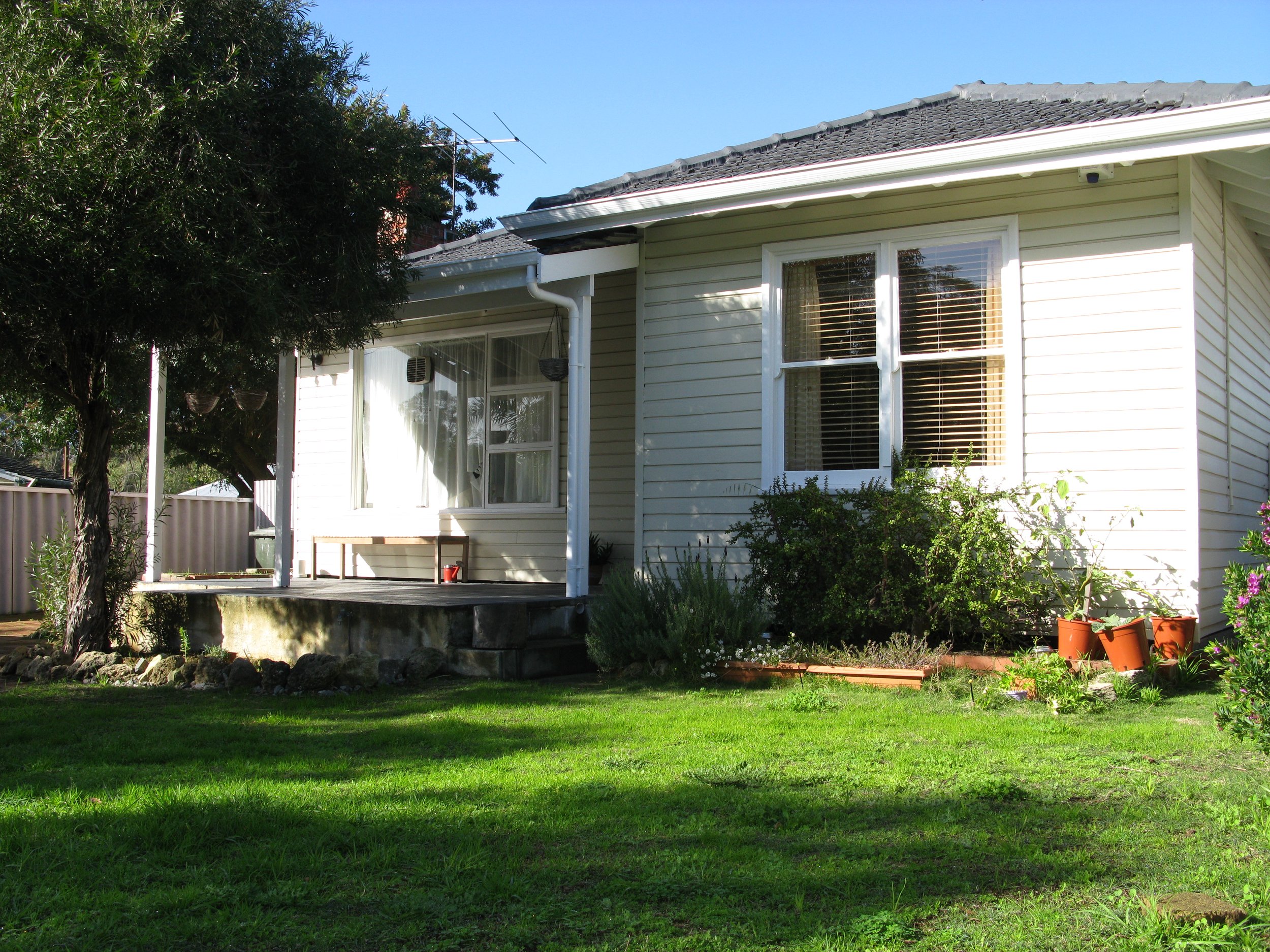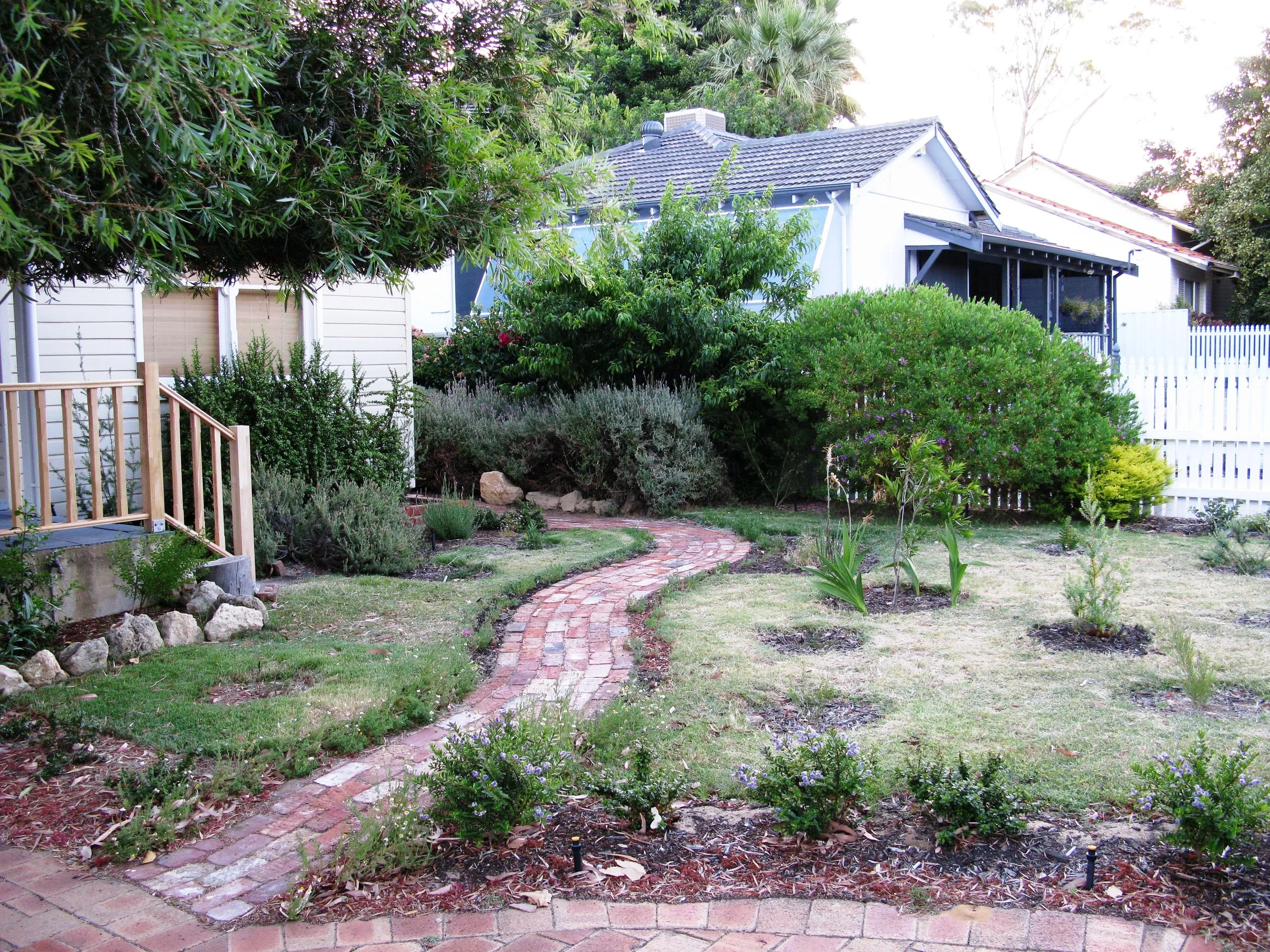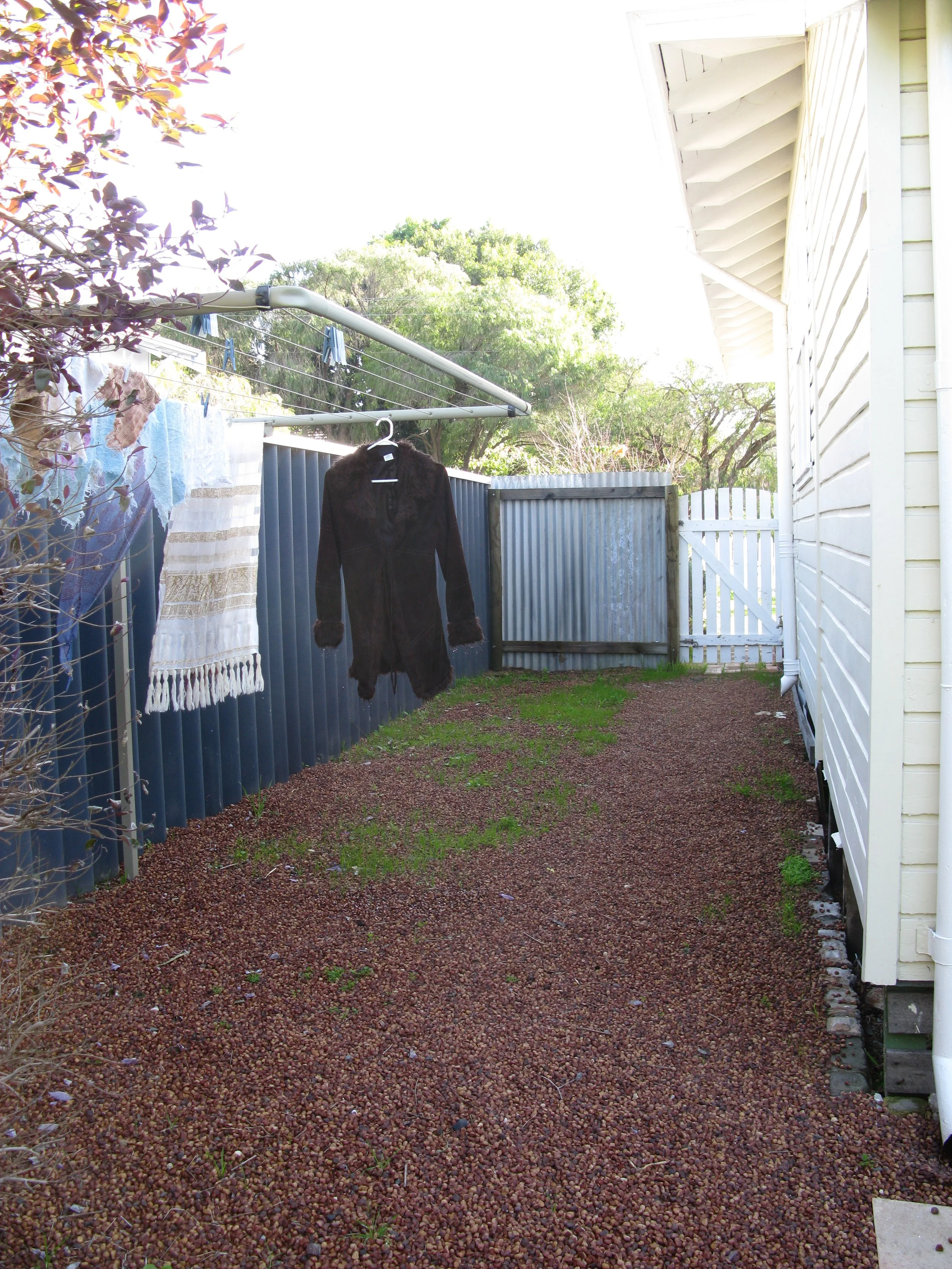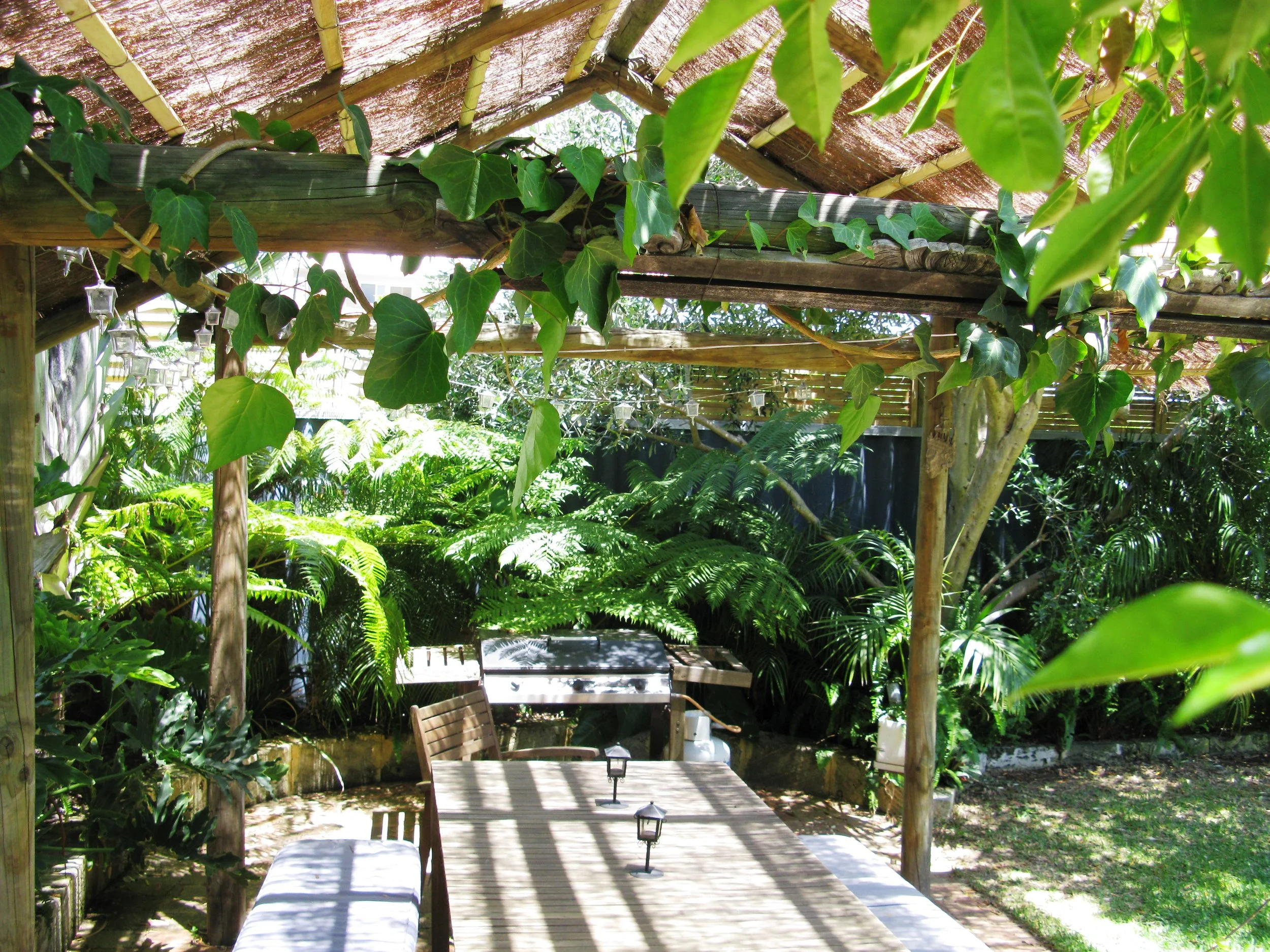Water-wise gardening - factoring in “zones”
This is a sweet story about a garden with many different “watering zones” which were individually reticulated to maximise water use efficiency. Before and after shots are below with brief explanations. This garden is located near Fremantle, Western Australia.

Before - nothing but lawn, a jade bush, and a few strappy roses. Although the western side had mature lavender and a bougainvillea

Progressive - hard scaping, red-recycled brick (to match the chimney on the Eastern side of the house).

After - dry zone - exposed north-facing garden - planted out with WA natives in the form of an English cottage garden. Many species were chosen based on flowering times, to provide colour, but also for the bees. The plants selected were matched to the soil association relevant to this particular area on the Swan Coast Plains. Sub-mulch drip irrigation was used twice per week in the first year - once per week in the second year - and now it is only watered if extremely hot weather persists for numerous days in a row. All ornamental watering ceases in winter, as per council requirements (but also not necessary as this region is quite wet in the winter).

Before, an un-used area. This is the western side of the house.

After - veg patch watered with drip irrigation twice a day (with potting table at the end). The watering schedule can be customised easily based on the the type veggies chosen. This area although being between the house and the fence, still received enough daylight to grow many plant species, given the strength of the Western sun.

Wet zone - cool southern side of the house with dappled shade. Lots of ferns and vines - it now has a real 'Bali' vibe - deep watered twice per week. All ornamental watering ceases in winter, as per council requirements (but also not necessary as this region is quite wet in the winter).
